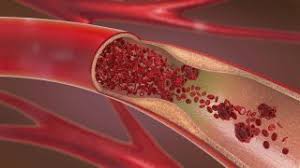Most people opt for vein removal and treatment to remove varicose and spider veins. The first thing that any physician tries to do is adopt non invasive methods to treat the veins. These veins can become discolored and painful and can cause discomfort along the way. In numerous cases, vein removal becomes necessary other practices are not as effective. A doctor may recommend the removal of any of the below mentioned symptoms are discovered:
- Severe pain which keeps you up at times
- Major skin problems such as discoloration and swelling
- Blood clots present in the arteries

Even when someone is not experiencing pain, they may adopt this removal method just to improve the appearance of the legs.
Which Removal Procedure is Right for You?
It is important that you and your doctor collaborate effectively to determine the compact removal procedure for you. Before determining the removal procedure, it is important to keep certain aspects in your mind. These include:
- Age and overall health
- The extent of the problem
- The symptoms and pain
- Comparing different treatment options
- The condition after each treatment method
- Doctor’s opinion and feedback
Make sure to talk about each aspect of the removal procedure in detail, such as anesthesia and other queries you may have.
Ways to Remove Veins
There are a few ways a surgeon might deal with vein removal. However, there are two notable procedures that stand apart. They include:
· Ambulatory Phlebectomy
This procedure involves less complicated procedures to overcome the varicose veins. The surgeon will numb the affected area near the surface of the affected area. Then they will remove the veins that are affected with the help of small cuts.
· Vein Stripping and Ligation
In case things escalate, the doctors will have no other options than to resort to vein stripping and ligation. In some cases, the surgeons also provide anesthesia to the patients to prevent additional pain. After anesthesia, the doctor will make an incision to find out the affected veins and remove them effectively.
What Happens After the Procedure?
After the vein removal, you might face a few side effects of the procedure. One of the most common ones is swelling, bruising, and changes in skin color. In some cases, the side effects can escalate and result in blood clots, scarring, and infections.
You may have to wear the compression stocking for some time to make sure you recover better. When you reach home, many doctors advise you that you start working out and ensure that you stay active throughout the time.
No matter what procedure you go for, it is important that you take a few steps in mind. They include:
- Watching out on the weight
- Working out regularly
- Raising the feet while sitting down
- Not crossing legs
- No tight clothes
These removal methods often require more care than non-invasive methods. Therefore, it is important to make sure that you go ahead with the right ones. Vein removal via surgery may cause more pain compared to other options. The recovery time is also high, which can range between 1 to 4 weeks.
Vein Removal: Final Thoughts
If you are facing any vein problems or need to get one removed, do not waste more time and reach out to Norman Chideckel, MD, an award winning vein specialist at the Vascular Surgery & Vein Center.
Schedule an appointment today
Vascular Surgery & Vein Center
Dr. Norman Chideckel
108 East 96th Street
New York, NY 10128
212-993-6133


